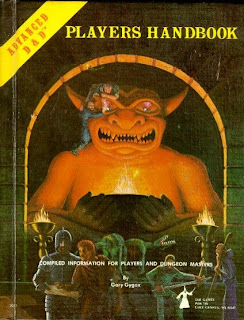Man, what a stressful week. In an effort to relieve some of that stress, I'm hitting that often neglected Steve Jackson game, TOON.
Products: TOON: The Cartoon Roleplaying Game (1984) & Son of TOON (1986)
Aaron AardvarkI was starting to like this character by the time I finished him. I tried putting myself in a mindset of the old animators, who would develop an idea around an almost real situation first - an animal in its natural habitat that otherwise acted human. The TOON game, though, has no such 'logic' controlling it (they make a distinction between 'character' animals and 'real' animals, for example). Still, the two or three times I played the game was enjoyable, for what it was, and I'd play it again.
Description: Aaron looks like a typical aardvark. He stands three feet tall and has a long snout. He usually looks tired and unkempt. He wears rumpled shirts (no pants) and carries a cup of coffee that always seems to be full. He speaks in a low monotone voice and acts like nothing surprises him.
Beliefs and Goals: Sleep during the day and stay up all night. Scrounge for ants and termites to eat, and wash them down with a nice, hot cup of java. Try to look unimpressed and unaffected by even the most bizarre occurrences. Watch out for lions, leopards, dogs, big snakes, or anything else that might want to eat me. You can usually out-think them (but try not to work too hard or look too stressed while doing it).
Hit Points: 11
Muscle: 3
Break Down Door: 3
Climb: 3
Fight: 5
Pick Up Heavy Thing: 3
Throw: 3
Zip: 2
Dodge: 2
Drive Vehicle: 2
Fire Gun: 2
Jump: 2
Ride: 2
Run: 2
Swim: 2
Smarts: 6
Hide/Spot Hidden: 8
Identify Dangerous Thing: 9
Read: 9
Resist Fast-Talk: 9
See/Hear/Smell: 9
Set/Disarm Trap: 7
Track/Cover Tracks: 7
Chutzpah: 4
Fast-Talk: 7
Pass/Detect Shoddy Goods: 7
Sleight of Hand: 4
Sneak: 4
Schtick:
Incredible Speed (Burrowing) 5
Of course, I wonder how much contemporary players would get of the game, considering Saturday Morning Cartoons are pretty much over (I think Cartoon Network helped to kill that notion). Unless the younger kids go out of their way to educate themselves in old Warner Bros. and MGM mayhem, I think a lot of the concept would be lost on them.
Then again, the TOON game was never intended for great things - it's a pick-up game, after all. It's something to do while you're waiting for the rest of the players to show up. The game was reprinted as a Deluxe Edition in 1991, comprising over 200 pages (up from the thin module-size prints of 40 pages or so), and that was followed by three additional 200+ page supplements. The supplements were increasingly silly, and by the time the last one was printed (TOON Ace Catalog) the already-difficult-to-take-seriously game was almost completely unplayable because they abandoned any comprehension of rules and started to violate their own premises. It's one thing to be funny, but another thing entirely to be unusable.
Related Links
TOON at Steve Jackson Games








